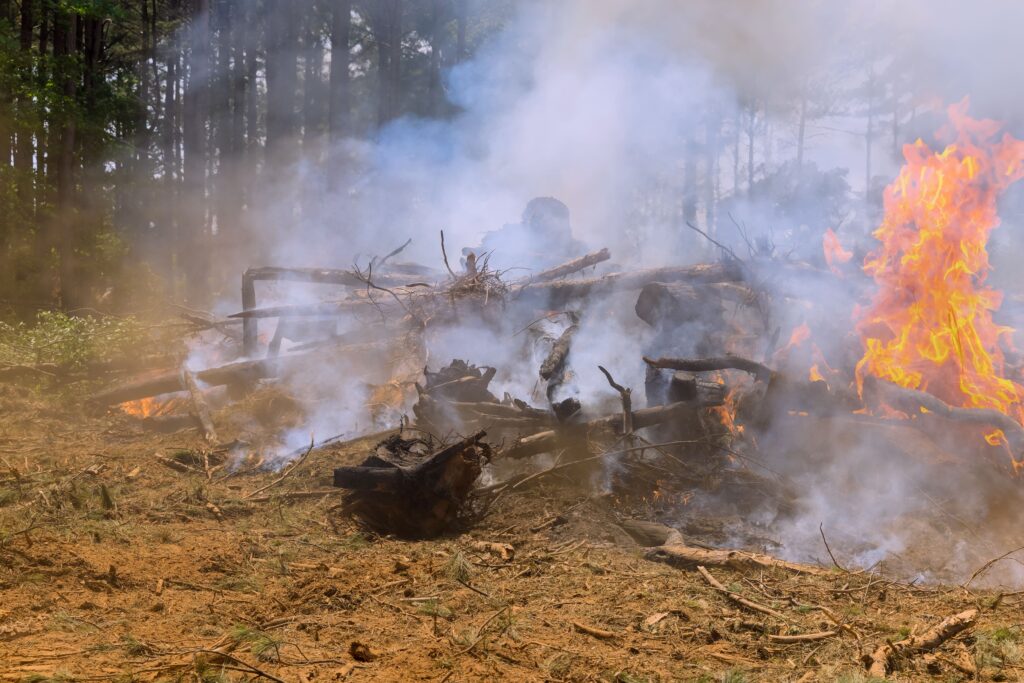
|
Nadrich Accident Injury Lawyers is no longer actively retaining Dixie Fire victims. |
|---|
The Dixie Fire, which burned 963,309 acres of land from July to October 2021, destroying 1,329 buildings, destroyed the town of Greenville, CA, leaving only a few buildings standing in the Plumas County town which had a population of just over 1,000 people. Now, several months after the fire, efforts are underway to rebuild Greenville.
A rebuilding coalition named the Dixie Fire Collaborative, which contains members such as loggers and members of a tribe indigenous to the area, is helping lead the effort. The loggers are supported by an environmental nonprofit and seek to convert scorched, dead trees into wood that can be used to build new businesses and homes.
Sue Weber, who co-chairs the collaborative, said Greenville cannot be rebuilt to the same way it was before. Greenville’s population was declining before the fire and had over twice the poverty rate of the state of California.
The collaborative sees about 150 people attend its meetings every month at Greenville Elementary School, and is trying to attract broadband internet service providers in order to lure remote workers and young professionals to Greenville. The collaborative is also trying to get a mobile saloon and food trucks set up downtown, and is looking into affordable, fire-hardened housing solutions, such as housing made from cross-laminated timber or insulated concrete, as well as housing built with assembly line production or 3D printers.
The Mountain Maidu people, a tribe indigenous to the area, say the Dixie Fire wouldn’t have been as bad as it was had they still took care of the land. The Maidu used to regularly conduct cultural burns in the area for multiple reasons: to control pests, to keep land open to more easily spot game and intruders, and to stimulate seed production. The burns also helped them obtain medicine, tools and materials for basket making.
These burns kept vegetation from becoming overgrown and creating conditions ideal for massive wildfires, but the burns stopped in the middle of the 19th century during the Gold Rush. Settlers killed the Maidu, logged the biggest trees which were the most resilient to fires, cut large portions of forest to the ground, replacing the forests with dense vegetation that burns easily, and suppressed fires sparked by nature as well as cultural burns.
Flames were funneled down hillsides by the wind towards Greenville during the Dixie Fire. A combination of dense timber and dry brush led to flames running across the tops of trees, increasing in speed and shooting out embers.
The firefighters who tried to defend Greenville were quickly overwhelmed by numerous spot fires, which burned hot enough to melt street lamps.
Two years before the Dixie Fire, PG&E returned over 2,000 acres of land to the Maidu people, who had been trying to reintroduce cultural burns in order to prevent large wildfires when the Dixie Fire happened, disrupting their plans. Ironically, PG&E’s equipment was found by state investigators to have started the Dixie Fire.
Today, the streets of Greenville are practically empty, save for workers moving concrete and cutting down burned trees.
The trees are valuable. They can be turned into timber which can be used as inexpensive building material to rebuild Greenville with. However, a challenge is that there’s nowhere for them to be milled, since mills in the area are backlogged.
Randy Pew, a logger from Greenville, is hoping to change that. He built a sawmill in Crescent Mills while partnering with the Sierra Institute for Community and Environment. The sawmill cut its first board in December. The mill features greenhouses that can be utilized as solar dry kilns, as well as gearhead motors which were bought in Canada at a discount after being located on Craigslist.
Pew’s idea could be replicated across the mountains of California, which contain a lot of closed sawmills and a lot of burnt trees. In the past, according to Jonathan Kusel, executive director and founder of the Sierra Institute, contractors were being paid a lot of money to simply grind burnt trees into wood chips.
CalTrans has now agreed to provide Pew’s company J&C Enterprises with logs from burnt trees, but before this agreement, Pew says enough wood to build 15 houses was being turned into wood chips every day.
Lumber mill operators are looking to eventually move from milling salvaged, burnt logs to milling trees cut down as part of forest thinning projects which are meant to return the land to precolonial conditions which are more fire-resilient.
A meeting of the Dixie Fire Collaborative in the middle of March saw members of the Greenville community make and celebrate progress towards rebuilding the town. News was shared over bratwursts from Mary’s German Grill about a popular manufacturer of jerky that laid a new foundation, as well as progress towards a new gas station. Updates were provided regarding soil sampling and debris removal, and questions were asked about solar panels and permits for fire sprinklers.
An announcement was made that the sawmill would be formally opened soon, and the crowd came alive, clapping and whistling.

